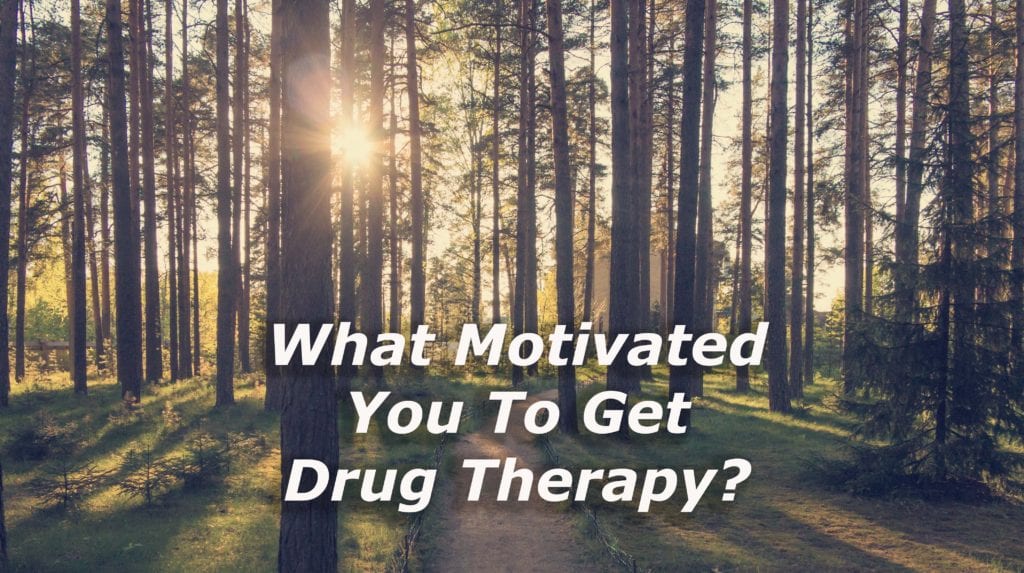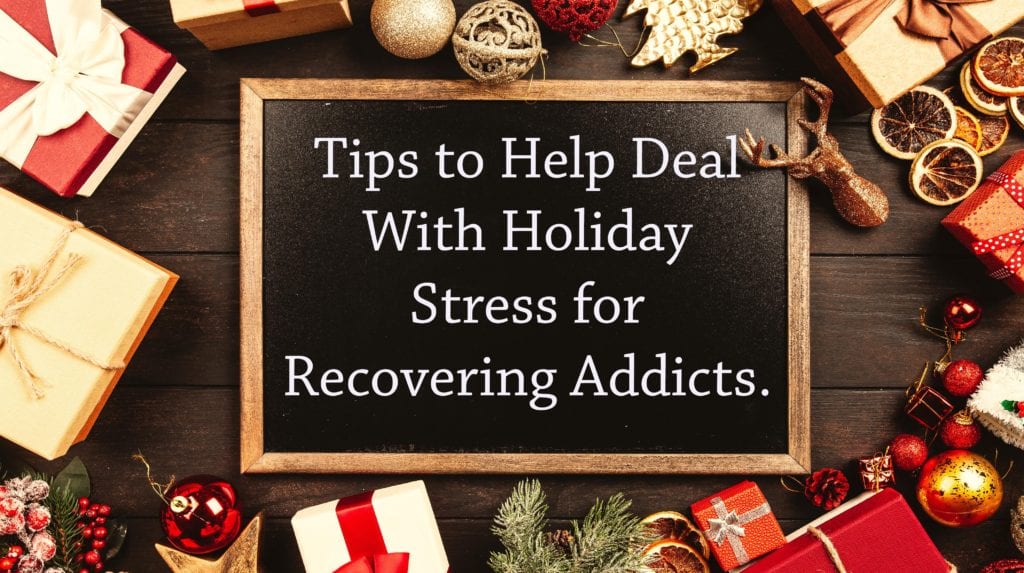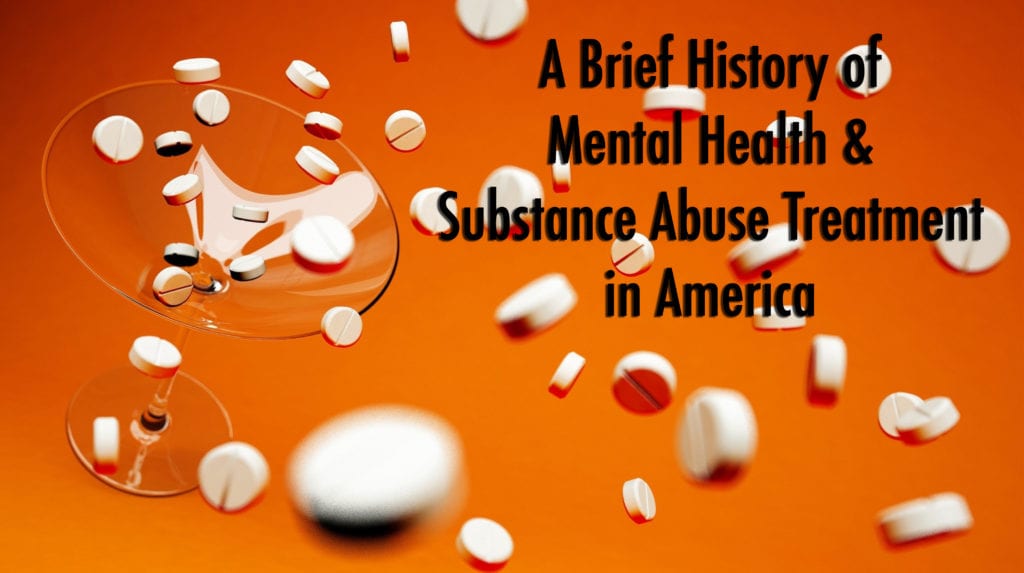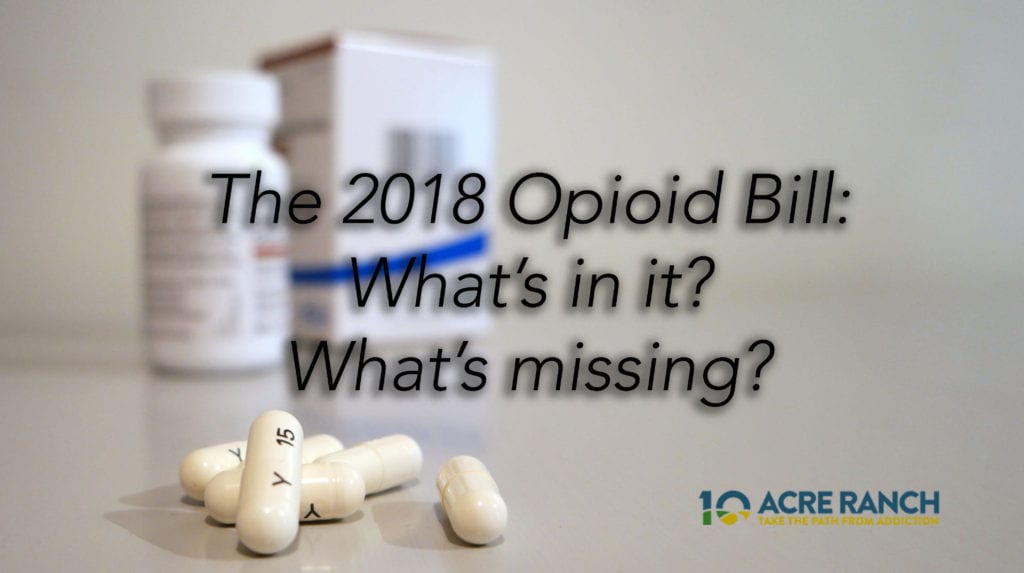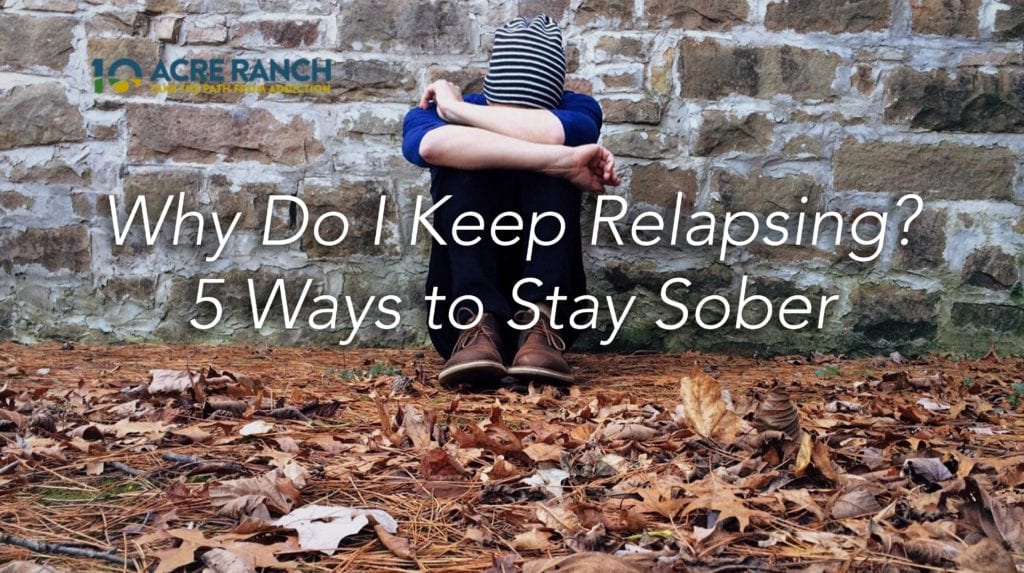The motivation to seek rehabilitation at an addiction treatment facility will always have to come from within. Your personal desire to want to change things in your life will help guide you to make the right choices. Maybe you have suffered long-term negative consequences as a result of your addiction, such as losing a job, getting arrested or ruining your personal relationships with friends and family. Or perhaps you understand that your addiction could eventually drain your bank account and it could eventually kill you.
Continue readingHoliday Stress: How it presents special challenges for recovering addicts and helpful tips to avoid a relapse
Family gatherings, holiday office parties, everywhere you turn, drug and alcohol use is on prevalent display. The stresses of the busy holiday season can be overwhelming to even conventionally well-balanced people. Loneliness, buying and being able to afford gifts, long lines in stores, long lines in traffic and financial uncertainty are all potentially stressful endeavors. For many people, seasonal affective disorder (SAD) is in full swing during even the brightest days of the season. The relationships with your family and friends can cause great stress that all comes out during the hustle and bustle of this busy time of year. It certainly is an emotional time for everyone. All of this is especially true for a recovering addict or someone who currently is struggling with substance abuse.
Whether you are just beginning a rehabilitation program, or you are celebrating years of successful sobriety, temptations that challenge your recovery will present themselves this holiday season.

Experiencing feelings of “the blues” is a common occurrence for many individuals between Thanksgiving, Christmas and New Year’s Eve. Many are reminded of the fact they are alone. Some holidays are key dates reminding us of the loss of a loved one or family member. Perhaps this is the first holiday since a family member’s passing and experiencing it without them just isn’t the same.
For others with a troubled family upbringing, it could be quite the opposite. Many people did not have a good relationship with their family and the holidays can bring up a barrage of emotions tied to past physical or mental abuse within the family. In some instances, personal guilt may arise from memories of your own struggle with addiction and the effect it had on your family and relationships. Throwing yourself into a situation with people you haven’t seen for long periods of time can greatly amplify any emotions you have attached to them.
Likewise for many recovering addicts, the holidays can remind them of times of severe overindulgence, past parties and long benders of hardcore substance abuse. This can lead some people to romanticize these past experiences. For someone in recovery this could be a great temptation to relapse back into his or her old habits.
With the right plan, it is absolutely 100% possible to attend holiday gatherings and events without indulging in drug or alcohol use.
Even if you are currently overtaken by your addiction, there is a way to get sober and stay sober, not only for your family members and loved ones, but for yourself as well. We suggest being prepared with a plan to maintain your sobriety and avoid or at least limit your exposure to potential relapse triggers. Be aware of an exit strategy if everything simply becomes too much to handle. Don’t be embarrassed about your struggle. As we all know with addiction, the struggle is a lifetime battle and you should have your exit strategy thought out well in advance. You should spend time thinking about your plan because your sobriety is absolutely worth the extra effort.

Having a concrete plan can help build your personal confidence that you can successfully stay sober. This plan should include:
- Having someone to call for help in case you experience relapse triggers.
- Take a sober friend with you to events, so you don’t feel like you’re the only sober person at the party.
- Formulate a confident, solid response when someone asks why you aren’t drinking or using drugs. *Hint: your answer is more for yourself than it is for them.
- If you know you are going to feel uncomfortable, let the hosts know you can only stay for a short time. This will take pressure off of yourself and you won’t feel like you need to stay to please everyone else.
- Have a non-alcoholic beverage in your hand at all times. Bring your own drinks if you have a preference. Don’t rely upon others to cater to your personal needs.
- Do your best to surround yourself with supportive, loving, caring people. In many instances, reinforcement from family members can be a great help on your path to recovery.
- Eat something sweet to temporarily nullify a craving. This has been shown to be effective in distracting your brain, although temporarily.
- Try to eat healthy and feel healthy. Maintaining a positive, healthy mindset and lifestyle will greatly reduce your urges and cravings. Feeling good is crucial in maintaining sobriety and a sustained recovery.
- Be honest with yourself. Tell those who you trust about your recovery. Let them know if you feel pressure to use again and use this plan to help you stay away from a relapse.
Most importantly, be constantly aware of your own mental health and the physical needs associated with your recovery journey. Never be afraid or ashamed to ask for help. If you feel challenged by a family member or loved one, take a step back. Think about your life. Think about your choices. Know you are on the right path and walk away if you feel that your personal well-being is in danger. Knowing these risks will help you know yourself. This will strengthen your perspective and hopefully it will help keep you on the right path.
If you encounter a relapse, or run into an old friend or family member who needs help with their substance abuse, know that help is always just one phone call away. Call us anytime. We are available 24/7, 365 days a year to help.
Call Us Today: (877)-228-4679
A Brief History of Mental Health & Substance Abuse Treatment
Throughout history, the use of illicit substances is documented as far back as the earliest of recorded human civilization. 5,000 year-old Egyptian hieroglyphs show us that people who suffered from alcohol addiction were cared for in the homes of other people. Both the ancient Greek and Roman empires carry records of not only people suffering from alcoholism, but also for those people receiving treatment in “public, or private asylums.”(1) The ancient Chinese civilizations also had problems with their citizens abusing opium, which was first imported from Great Britain. Opium abuse also gave westerners a sense of moral obligation to colonize the greater part of Asia and help them wean off of their addiction to opium. As such, the British government began compelling the Chinese to cut poppy production after the second Opium War.
In America the first instances of any substance abuse treatment were in the Native Americans’ ‘sobriety circles’. The European settlers of the 1600’s had brought alcoholic beverages to the Americas and soon they began trading alcohol to native tribes, sometimes for nefarious reasons. It is known that the European settlers would give chiefs gifts of alcohol before they negotiated settlement and trade deals, to loosen them up. It has been argued that the European settlers of the 1600 and beyond would often give alcohol to native populations to decimate them and make them conquered more easily. Members of many tribes attributed the alcoholic liquids to ‘bad spirits’. They would gather those affected in a circle formation to give them a sense of tribe and to try to repel those bad spirits. The 12-step program model is loosely based on the natives’ sobriety circles.
In colonial America, Benjamin Rush, the father of modern psychiatry was the first to attribute addiction as a type of mental illness and therefore one that could be treated. This was the first time addiction was seen as anything different than the stigma of a moral failing. In Rush’s mind, alcoholism was a chronic disease that could be treated with various techniques. Those techniques became very hot properties, as every form of experimenter and entrepreneur wanted to try to profit off of the treatment of this disease. This led to some practices that we now know today to be very harmful such as electro shock therapy and injecting the body with various substances like gold, silver, mercury and arsenic. This injection therapy was the brain-child of Dr. Leslie Keely and while that method was unorthodox, and just plain wrong, one of his ideas, a 31-day stay at a treatment facility is the foundational drug and alcohol abuse treatment models primarily used today.

These substance abuse treatment centers were a huge step in understanding addiction and the ability to treat it as a disease.
Along came the era of prohibition and the temperance movement thought they had a major victory in reducing alcoholism in the United States. Prohibition however, was a colossal failure. Alcohol use continued to rise and after thirteen years, the 21st amendment was ratified to help fight organized crime and allow citizens to continue to consume alcohol legally. After just 2 short years, Bill Wilson and Dr. Bob Smith founded Alcoholics Anonymous. In the formation, they channeled the concept of the sobriety circles from the Native Americans and also were the first to use the 12 steps in recovery. These steps were a pathway of different techniques, geared towards living a life free from alcohol or drugs. AA remains today as the most commonly used resource for someone looking to steer away from substance abuse.
Many people have found the help they need in AA or their offshoot, Narcotics Anonymous (NA). Still, others criticized the use of the ‘higher power’ and surrendering to being powerless against their addictions. As this was the classic AA model, today there are alternative versions of the program for agnostics and secular considerations of the twelve-step program.
The Minnesota model really cemented the version of the substance abuse treatment facility that we know and understand today. In 1948, this model incorporated the principles of the 12-step program, but added family involvement within a 28-day inpatient stay. AA was attended both during and after the inpatient stay. They also believed that addicts could help each other through their recovery so the hospital was staffed with both medical professionals and trained resource personnel that were usually recovering addicts themselves. This treatment model was instrumental in suggesting that alcoholics and other addicts were not morally inept and instead had a physical disease that was treatable. The stigma of substance abuse continues to this day, but more and more are becoming increasingly understanding of the concept of addiction as a disease, instead of a moral failing.

During the early years of substance abuse treatment, many experimental methods were adopted and tested.
One example was the United States Narcotics Farm in Lexington, Kentucky. This farm legitimately had good intentions in helping addicts recover from their disease. They were among the first to use methadone to help heroin addicts, a practice that continues with success to this day. The Central Intelligence Agency however found an unnoticed resource with the farm, using it to conduct early experiments with LSD on their patients. The Federal Government decided to turn its work with substance abuse to the states in 1975.
Substance abuse and mental health treatment has come a long way since then, and science is still progressing to more effectively treat those in need.
Medications have been developed to help fight substance abuse and are showing great promise. Medically assisted treatment (MAT) programs are being used today to fight the current opioid epidemic. These medications help the patient control and manage their withdrawal symptoms, which is a reason many don’t want to quit their addictions. A recent move towards an evidence-based approach to recovery has advanced rehabilitation facilities in a positive way. This approach uses scientific verification to prove the success of their treatment or rehabilitation programs. However, there are still a lot of recovery centers that try to take advantage of addicts, as they are seen as a vulnerable and marginalized group.
Progress in psychology and psychotherapy have shown addiction specialists a deep connection between mental health and substance abuse. Today virtually all alcohol and drug abuse treatment programs use a combination of social, psychological and medical treatments.
As we continue to learn from our history, there is continual pressure for the substance abuse treatment industry to innovate and evolve with the trends and new discoveries science has offered. This pressure is guiding the treatment industry in the right direction, but there are still many who need help. If you or your family member or loved ones are seeking treatment, give us a call right away. We are open 24/7 and we can help you get the help you need.
(877) 228-4679
(1) White WL (1998) Slaying the Dragon. Chestnut Health Systems, Bloomington
The 2018 Opioid Bill
The United States Congress reconciled both House and Senate opioid bills aimed at reducing the deadly toll of the nation’s top health care crisis: the opioid epidemic.
In the SUPPORT For Patients and Communities Act, Republican and Democrat lawmakers came to a rare agreement between both parties. The drug overdose epidemic claimed 72,000 lives in 2017 alone and roughly two thirds of those deaths were from prescription and non-prescription opioids. The bill will now head to the Senate as the House of Representatives almost unanimously passed the bill in a rare, 393-8 vote. President Trump is expected to sign this legislation into law before the midterm elections. This is a fairly large bill, that will cost the US billions of dollars but many argue that the bill doesn’t do enough to address the nation’s greatest public health issue. Senator Elizabeth Warren has proposed a bill that would cost the US tax payer $100 billion over the next 10 years, as she argues this is what is really necessary to fully address the opioid crisis.
The SUPPORT for Patients and Communities Act takes a wide approach to the opioid epidemic from law enforcement, treatment and public health care measures.
We will talk about some of the major policy changes in the bill and the full-text of the bill is available here.

One of the greatest achievements of the new bill is a provision to allow Medicaid recipients to seek care at addiction treatment centers. The restrictions on Medicaid funding for substance abuse treatment had been long outdated and congress finally addressed this problem. Allowing Medicaid to help fund up to 30 days of inpatient rehab stays, including medication-assisted treatment (MAT) is going to help a lot of people get the help they desperately need. The bill authorizes a grant program through the Substance Abuse and Mental Health Services Administration (SAMHSA) to help communities develop opioid recovery centers. While the bill does address the lack of funding for increased access to treatment programs, many addiction specialists argue the bill does not do enough in this regard. While noting that the bill is not itself bad as it does a lot to address a multitude of issues, it is severely lacking on access to treatment, which many believe is the most important technique that could help solve the opioid crisis.
Another provision in the bill lifts restrictions on medications used to treat opioid use disorder and other types of addiction. This measure simply allows more medical practitioners to prescribe medications such as buprenorphine, used to help ease withdrawal symptoms in addiction recovery. As it stands today only 5 percent of doctors are licensed to prescribe this life-saving drug. Another medication, naloxone was addressed in this bill. One provision allows first responders greater access to the life-saving opioid antagonist which can reverse the effects of an opioid overdose.
The major law enforcement provision of the SUPPORT Act is aimed at the trafficking of drugs through the postal system. Fentanyl that is illegally imported from Mexico and China has been blamed for many of the opioid-related deaths in recent years. One package seized in Philadelphia last June contained 110 pounds of fentanyl, valued at $1.7 billion dollars. This was estimated to be enough of the dangerous substance to kill the entire population of the state of Pennsylvania two times over. Fentanyl is 50 times more potent than heroin, so it is easy to smuggle large amounts of the substance through the mail system. This bill makes it harder for people to sneak illicit substances into the US from abroad. The bill will require packages coming in from foreign countries to reveal their contents and where and who they’re coming from. While the bill is broadly aimed at targeting illicit drug suppliers, it includes protection for individuals looking to import cheaper prescriptions from overseas. This was in direct opposition to pharmaceutical companies’ requests to include enforcement against importing cheaper prescriptions from other countries.

While the SUPPORT for Patients and Communities Act does a lot to fight the opioid epidemic, there is still a lot of work to be done in the near future. The bill even authorizes research into opioid alternatives to pain management and penalizes drug manufacturers and distributors for overprescribing. A lot more could have been done to address the root causes of addiction and it should have offered greater access to outpatient treatment programs. However, while a lot of divisive partisan issues like funding were ignored in the bill, the Democrats and Republicans agreed on a lot of ‘second-tier’ issues that will definitely help save lives. Given the extreme divisiveness in American politics in the Trump era, this is a small political victory. Thankfully, everyone finally seems to want to work together in fighting this urgent national health crisis.
Why Do I Keep Relapsing? 5 Ways To Become Stronger
If you find yourself asking this question, either for yourself, a family member, loved one, neighbor or coworker just understand that a relapse is a very normal part of recovery. If you have been through a successful addiction treatment program, experienced a period of sobriety and fell into a relapse, please know you are not alone. Relapses are not uncommon and it does not mean you are a failure. Hope is always an option and there are many resources that can help you. How you react to your situation after experiencing a relapse is critical in your overall road to recovery. In this crucial time, forgiveness is an important factor to express to yourself or your loved one. Learn to forgive yourself or your family member for the recent relapse into substance use. This is a better, more productive attitude to have that in the long run will help you or your loved one keep striving to maintain their sobriety.
“Treatment of chronic diseases involves changing deeply rooted behaviors, and relapse doesn’t mean treatment has failed.”–National Institute on Drug Abuse (NIDA)
It is estimated that 40-60 percent of people who maintain sobriety through rehab, treatment and recovery will relapse into heavy use, while 70-90 percent will relapse and use again at least once. In the medical field, a relapse used to be treated as an uncommon thing but that has largely changed due to the advances in behavioral science and addiction therapy. Sadly, many addicts are stigmatized by society as hopeless drug fiends or treated with the perception that they are a bad person for their substance use. Many of us here in the addiction treatment industry are advocating a different perspective. With addiction being a curable disease, you could compare it to the relapse rates of people with other medical problems such as diabetes, high blood pressure or asthma. The rate of relapse into these common medical diseases is close to the same as for people with a substance abuse disorder. Treating this as a medical condition will help ease the stigma associated with drug and alcohol abuse.
As we have seen the overdose epidemic explode in the United States, it is important for us to begin treating this as a serious medical condition, not a criminal activity reserved only for the ‘bad people’ in society. As you are reading this now, most of us know someone dearly who has struggled with some form of substance abuse. While we look to help those closest to us, deep down inside we know there is still a good person underneath the surface of their drug or alcohol addiction.
It is estimated that nearly 72,000 people in the United States died from a drug overdose in 2017. That’s close to 200 people each and every day. – Centers for Disease Control (CDC)

Warning: Your Drug Tolerance Levels Will Change
It is extremely important to note here that many who relapse will overdose their first time because they think they can do as much of the drug as they had been doing before they went through detox and a period of sobriety. Simply put, your body cannot handle as large an amount of the drug, even though they had built up a tolerance over their period of substance abuse. Your tolerance has changed through recovery and you might not be able to handle the “usual dose” as you have in the past and immediately die. We cannot stress this enough, so please keep this in mind throughout your post-recovery stage as most people do not plan to have a relapse.
Ultimately, it is up to the individual in recovery to actively want to change things in their life to help them maintain their newfound sobriety. This is a difficult path to navigate and there are many things you can do to help you avoid the temptation to relapse into substance use.

Specific Risks to Avoid During Your Process of Recovery:
- Avoid drug-related ‘triggers’: Many in recovery can be tempted to relapse if they are around old hangouts where they used to purchase or consume drugs or alcohol. Even the sight of drug paraphernalia or a drink can be too much to handle for some. Also known as drug-related cues, these thoughts can come from a variety of places, depending on your individual situation. Most treatment programs will help you identify your potential triggers and help you formulate a plan to avoid them.
- Be extra cautious during the first 90 days: Most relapses occur during this crucial period of recovery. Your addiction doesn’t simply stop once your detox is completed. For many, addiction can shape your thoughts and behaviors for the rest of your life. The good news is the longer you stay sober, the easier it will be for you to avoid a return to your past substance abuse.
- Find help in a structured environment: Rates of relapse are much lower for people who participate in some sort of organized support group after their drug or alcohol detox. Relapse prevention or twelve-step programs like Alcoholic’s Anonymous (AA) or Narcotics Anonymous (NA) are great at helping people maintain their sobriety and offer personal help when you feel the urge to use again.
- Start creating healthy lifestyle habits: Studies have shown that even a mild amount of exercise can help reduce cravings and withdrawal symptoms for recovering addicts. Eating healthy foods and thinking healthy thoughts are important to developing and rebuilding the self-confidence necessary to maintain your sobriety. Controlling your emotions and developing healthy coping mechanisms to deal with difficult situations can greatly increase your success in recovery and sober living.
- If you do relapse, don’t be afraid to ask for help (again): When a relapse occurs, know that there are a multitude of resources willing and able to help you break the cycle of your addiction. Sometimes treatment needs to be tried several times before the patient is fully recovered. Remember, relapse is completely normal and nothing to be ashamed about. Your family and loved ones will be happy you were honest and asked for help. Repeated attempts will work eventually and it will help you develop the desire for a healthy, sober lifestyle.
